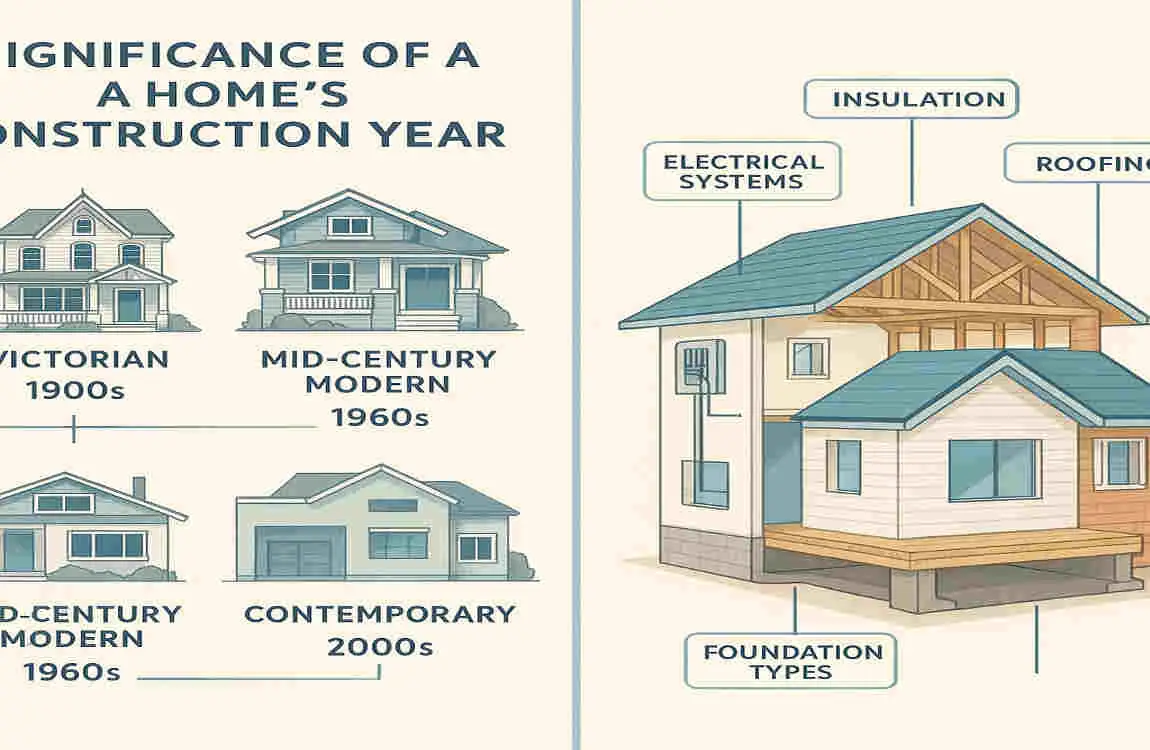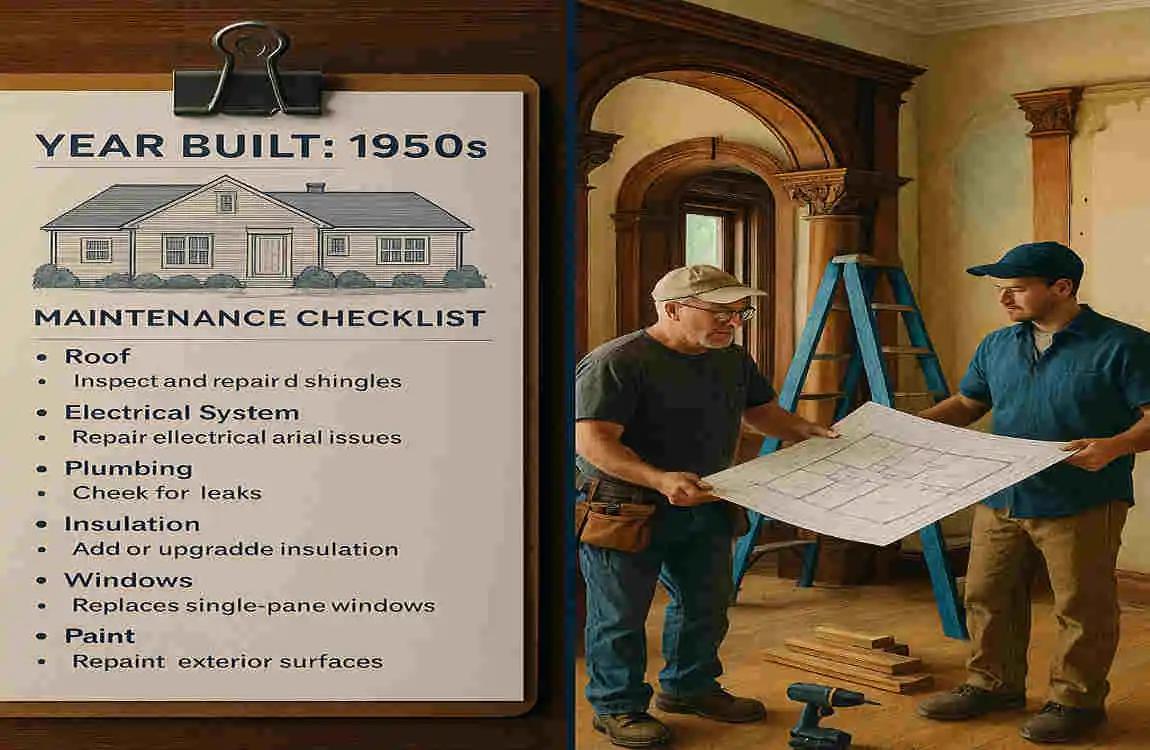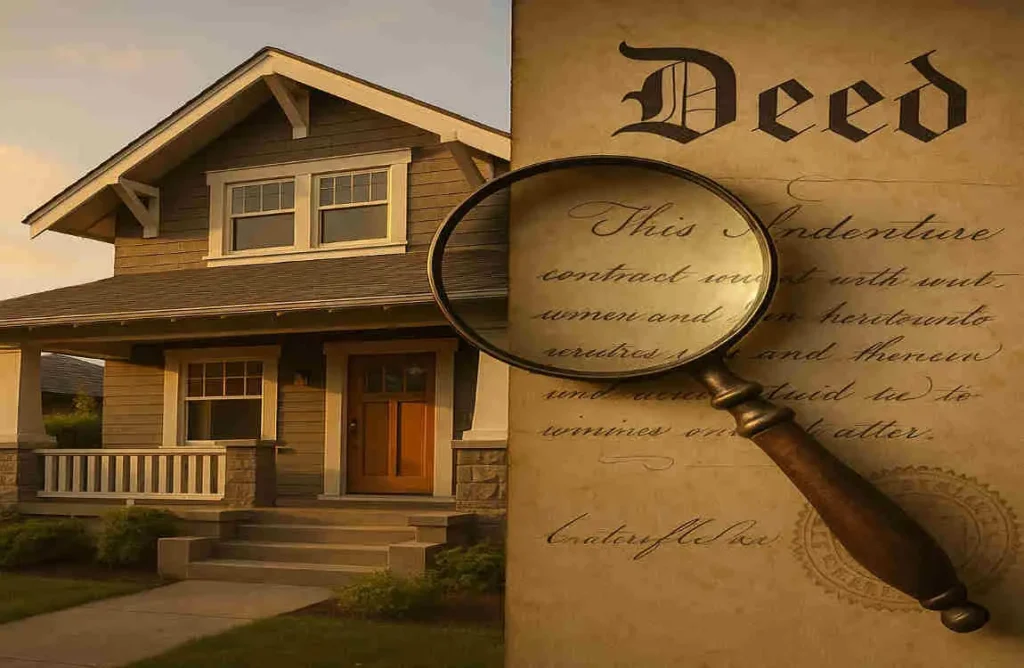Imagine walking through your front door and feeling a sudden curiosity about the walls around you. What stories do they hold? Who lived here before you? And most importantly, what year was my house built in? It’s a question that pops up for many homeowners, whether you’re buying a new place, planning renovations, or just satisfying that itch to know more about your space.
Discovering your home’s year built isn’t just trivia—it’s like unlocking a time capsule. It reveals clues about the era’s architecture, the materials used, and even the evolution of the neighborhood. Think about it: A house from the 1920s might whisper tales of the Roaring Twenties, while a mid-century modern gem could echo the optimism of post-war America. Knowing this detail helps you appreciate your home’s character and make smarter decisions.
Why does this matter so much? In a world where homes are more than shelters—they’re investments and personal havens—understanding your home’s history adds depth. It can influence everything from maintenance costs to property value. Plus, it’s fun! You might uncover surprising facts that turn your house into a conversation starter at dinner parties.
Understanding the Significance of Your Home’s Year Built

Your home isn’t just bricks and mortar—it’s a piece of history. When you figure out what year my house was built in, you gain a window into the past. This detail places your property in a broader architectural context. For instance, homes from the Victorian era often feature ornate details, such as gingerbread trim, reflecting the craftsmanship of the late 1800s. Newer builds, say from the 2000s, might emphasize energy efficiency with open floor plans.
But it’s not all about looks. The year built ties into the historical value of your home. Older houses could qualify for historic registry status, which might come with tax breaks or grants for preservation. Imagine owning a Craftsman bungalow from 1910—it’s not just a house; it’s a living artifact. This can boost your sense of pride and even attract buyers if you ever sell.
Now, let’s talk practicality. Knowing the construction year shapes your maintenance and repair plans. Houses built before the 1970s might have outdated wiring or lead-based paint, requiring special attention. You wouldn’t want to ignore that. It helps you prioritize fixes that keep your family safe and your home running smoothly.
Consider how this affects property value. Appraisers look at the year built as a key factor. A well-maintained older home can hold or even increase in value due to its unique charm, while newer ones might appeal for their modern amenities. Insurance companies factor it in, too—older homes could mean higher premiums because of risks like aging plumbing.
Let me give you some examples to make this real. Picture a vintage 1940s cottage: It might need insulation upgrades, but its solid wood framing could outlast flimsier modern builds. On the other hand, a 2020 construction boasts innovative technology and eco-friendly materials, which may lower energy bills. Which one sounds like yours? By understanding these differences, you empower yourself to make informed choices.
Ultimately, digging into home year built records isn’t just educational—it’s empowering. It connects you to your home on a deeper level. So, if you’ve ever wondered how to find out when my house was built, know that it’s more than a date; it’s the foundation of your home’s story.
Methods to Discover “What Year Was My House Built In”
Uncovering what year my house was built in can feel like detective work, but it’s totally doable with the right tools. Don’t worry if you’re not a history buff—I’ll break it down into simple methods. Each one offers a piece of the puzzle, and combining them gives the clearest picture. Let’s explore public records, historical societies, physical clues, and digital apps. By the end of this section, you’ll have a roadmap to start your search today.
Public Records and Government Resources
Start with the basics: public records. These are often your quickest path to accurate info. Head to your county assessor’s office—they keep detailed home year built records tied to property taxes. You can usually access these online or in person. Just search for your address, and boom: The original construction date might pop up.
You may also read (what makes a great small bloxburg house layout).
Don’t stop there. Check local building permits and zoning records. These documents track when permits were issued for construction, additions, or significant changes. If your house was built in the last century, these could reveal the exact year. Many cities have online portals for this—it’s free and straightforward.
Online property databases are goldmines too. Sites like your county’s GIS (Geographic Information System) map or national resources like DataTree provide searchable info. Enter your address, and you might find not just the year built but also ownership history. Pro tip: If records seem spotty, call the office. A quick chat can clarify things.
Historical Societies and Libraries
For a deeper dive, turn to historical societies and libraries. These groups preserve archived maps, city directories, and ownership records that date back many years. Local libraries often have digitized collections—think of Sanborn fire insurance maps from the 1800s, which show building footprints and construction dates.
Contacting a local historical society is easy. Find them via a quick Google search for your town or county. They might offer workshops or volunteer help to sift through records. I’ve heard stories of homeowners discovering their house was built during a gold rush or post-war boom—fascinating stuff!
Utilize these resources by starting with old city directories. This list of residents by address can pinpoint when a home first appeared. Cross-reference with census data for extra accuracy. It’s like piecing together a family tree, but for your house.
Physical Clues in Your Home
Sometimes, the answers are right under your nose. Inspect your home for physical clues that hint at its age. Architectural styles are big giveaways—Victorian homes with steep roofs scream 1800s, while ranch-style houses point to the 1950s.
Look at construction materials. Older homes might have knob-and-tube wiring or balloon framing, common before 1940. Check the foundation: Stone or brick suggests pre-1900 builds, while concrete slabs are more modern. Peek in the attic or basement for stamps on lumber or pipes—they often include manufacturing dates.
Renovations can complicate things. An addition might make the house seem newer, but focus on the original features, such as door hardware or window styles. If you’ve got leaded glass windows, that’s a clue to early 20th-century construction. Take notes as you inspect—it’s empowering to connect the dots yourself.
Digital Tools and Apps
In our tech-savvy world, apps and websites make this search effortless. Real estate sites like Zillow or Realtor.com list the year my house was built right on property profiles. Just type in your address—it’s that simple. They draw from public data and occasionally display historical photos.
Specialized apps for homeowners amp it up. Try Home Zada or Property Shark; they track history, maintenance, and value. Some even use AI to estimate ages based on photos you upload.
For a step-by-step guide (as a rich snippet for SEO):
- Search your address on Zillow—look for the “Year Built” field.
- Cross-check with county records online.
- Download an app like BeenVerified for deeper dives.
- Verify with physical clues if dates don’t match.
These tools save time and often include related phrases, such as “how to find out when my house was built.” Combine them for the best results.
Why the Year Built Influences Home Value and Insurance
Ever wondered how a simple date like your home’s year built could affect your wallet? It does, in significant ways. When appraisers evaluate your property, they factor in age right away. Older homes might score points for character, but they could deduct for potential issues. A 1920s charmer with original hardwood floors? That boosts appeal. However, if it has outdated systems, the value decreases.
Insurance is another story. Companies assess risk based on the construction year. Homes built before 1980 might have higher premiums due to fire hazards from old electrical setups. Think about it: Knob-and-tube wiring isn’t as safe as today’s standards. Insurers want to know if your place is prone to problems.
Risk factors pile up for older homes. Plumbing from the 1950s could mean galvanized pipes that rust over time. Insulation might be asbestos-laden, hiking repair costs. You, as the homeowner, need to address these to keep premiums down. Modern upgrades—like rewiring or adding energy-efficient windows—can offset that.
On the flip side, newer structures shine here. A house from 2010 likely has code-compliant features, leading to lower insurance rates. However, even originals matter—preserving them while upgrading smartly strikes a balance between value and coverage.
Let’s make this personal: If your home was built before 1960, consider getting an inspection. It could reveal ways to modernize without losing charm, potentially saving you thousands. Understanding this link empowers you to negotiate better deals. For more on home appraisals, check out our.
How to Use Your Home’s Year Built Information for Maintenance and Renovation

Once you’ve nailed down what year my house was built, put that knowledge to work. It guides your maintenance like a personalized manual. Homes from different eras used specific materials—knowing yours helps you plan upkeep that lasts.
For example, a 1930s-built home might have plaster walls that require gentle care, unlike the drywall in newer homes. Identify era-specific techniques: Pre-1940 houses often used oil-based paints, so match that for repairs.
Renovation needs vary, too. Older homes could require seismic retrofitting if in earthquake zones. Spot potential issues like lead paint or inefficient heating early. This saves money and headaches.
Balancing preservation and modernization is key. Keep historical elements, like crown molding in a Victorian, while adding smart thermostats. It maintains value without erasing character.
Here’s a quick bulleted list of tips:
- Inspect annually: Focus on age-related weak spots like roofs or foundations.
- Budget wisely: Allocate more for electrical in pre-1970 homes.
- Hire experts: Use contractors familiar with your era’s builds.
Case study: Take a typical 1950s ranch home. The owner discovered the year the building was built via records and planned renovations accordingly—updating the galley kitchen while preserving the original tile. Result? A blend of nostalgia and function that increased resale value by 15%. You can do the same—start with your home’s date and build from there. For renovation ideas, see our [guide to home upgrades].
Common Challenges in Determining the Year Built and How to Overcome Them
Hitting roadblocks while researching what year my house was built in? You’re not alone. Missing records are common, especially for rural or ancient homes. Public databases might skip details if the house predates digital tracking.
Conflicting info adds frustration—one source says 1890, another 1910. This happens with renovations that alter records.
Remodeled or relocated homes muddle things, too. If your house was moved or heavily updated, the “year built” might reflect changes, not the original.
Overcome these by cross-checking sources. Use multiple methods: Combine public records with physical clues.
Tips include verifying with neighbors or old photos. If stuck, hire a title search service—they dig deep. Persistence pays off—don’t give up on your home’s story.
Additional Tips for Unlocking Your Home’s History Beyond the Year Built
Knowing what year my house was built in is just the start. Research past owners through deed records—uncover who lived there and why.
Neighborhood development adds context. Check community archives for how your area grew, from farms to suburbs.
Property boundaries might have shifted—old maps show lot size changes.
Explore oral histories via local groups. Talk to longtime residents; their stories bring your home alive.
Here’s a simple table to organize your research:
Research Area, Key Resources, What You’ll Learn
Past Owners Deed records, census data who lived there, and their stories
Neighborhood Changes : Historical maps, city planning docs, how the area evolved
Oral Histories, Local societies, interviews, Personal anecdotes, and hidden facts
Dive in—you’ll feel more connected to your space.
You may also read (why choose an architectural roof for your home).
